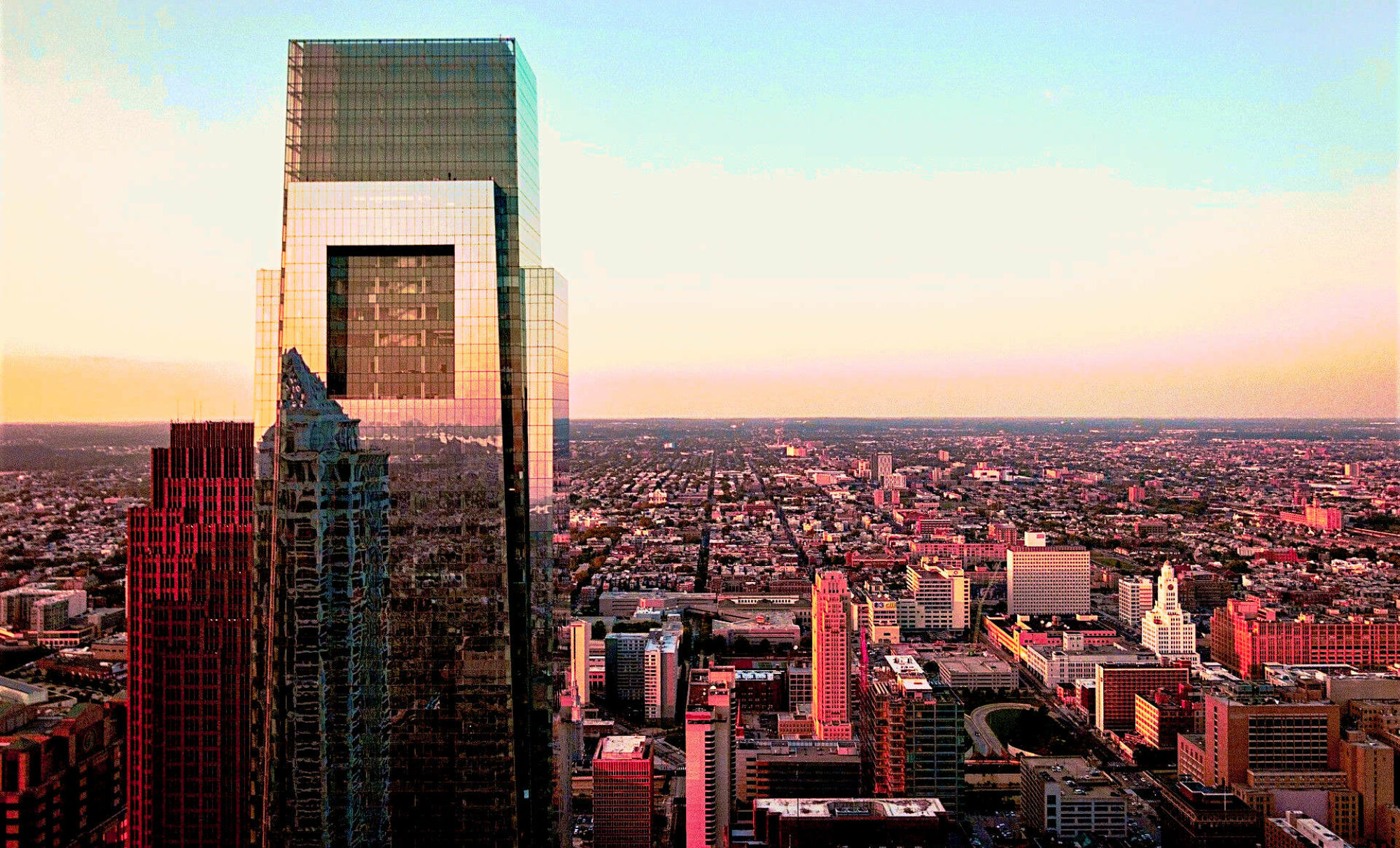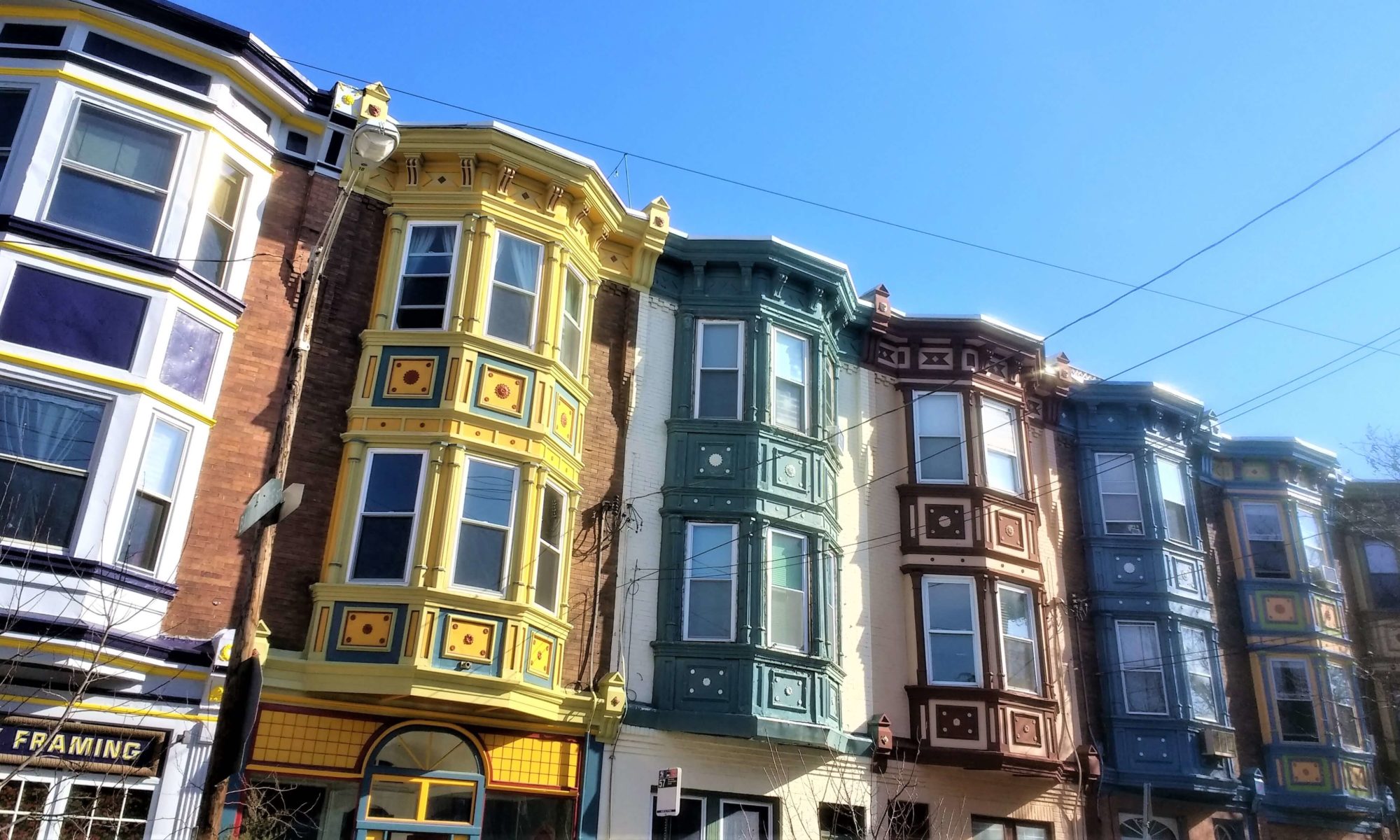Welcome to Permit Philly’s Philadelphia Multifamily Zoning Guide!
If you’d like to see the other parts of this series, click here.
Oh my god we’re back again. We’ve covered Commercial MiXed-use (CMX) and Residential Single-family Attached (RSA) zoning in our Philadelphia zoning guide. Now it’s time to tackle Philadelphia multifamily zoning.
In Philadelphia, multifamily zoning is for buildings that are allowed to hold – listen, you may want to sit down here – more than one family. I know. It’s heavy knowledge.
But that’s not quite as simple as it sounds: multi-family might not have anything to do at all with families in the car, two kids, and a dog sense. “Family” here just means a living space in a building. Multifamily buildings can have multiple units in a place. So sometimes, multifamily buildings look about the same as RSA-5 buildings; but they’ve got a unit or two in there. Other times, they’re more obviously just larger apartment buildings.
But you want to know more about this mysterious classification, because you are reading a zoning blog! Let’s dive in… after one important question:
Can I turn my single-family building into a building zoned as multi-family?
It’s like you didn’t even read the last post in this blog! So here it is again:
Technically, no: no one beside City Council members can change zoning in our fair town. However, you can use your single-family building as a multifamily building if you get a use variance from the City’s zoning board.
This is harder to do than it used to be, because while the zoning code is very restrictive and a lot of multifamily units have been re-zoned in recent years as single-family units, the current zoning chair does not like single- to multi-family conversions. It’s not impossible! Just pick your spots and have a banging plan (with pictures!) to take care of trash and parking.
Moving on…
Philadelphia Multifamily Zoning: RM-1 through RM-4
Any building with an RM designation can be used as a residence: for one family or as a multi-unit building. However, there are limits to how small each unit can be. In an RM-1 building, the minimum unit size varies: for the first 1,440 feet of square footage, you have to use at least 360 sq. ft. of lot area for the units. If your building is bigger, then awesome! … But you have to use 480 sq. ft. of lot area per unit. Them’s the breaks.
You can also use any of these buildings, as you can RSA buildings, as religious institutions – if they’re not attached to anything else. It’s a similar idea for schools, although you do have to get a special exception for that.
For business use, you will need a variance – the “Sure, why not?” permit – from the Zoning Board of Adjustment (for a third time, that link is here).
Important notice: RM dimensional zoning rules are nuts crazy insane
The basic rules about units and acceptable uses in RM buildings are easy to follow. However, the other rules – like, answers to the question “how big can this building be?” – are what we in the biz call “bonkers.”
First of all, unlike in other categories of the zoning code, there’s no exact pattern to the numbering. RM-1 is the smallest category… but RM-2 is the biggest. RM-4 is also pretty small. Go figure.
RM-4 buildings are not required to have any space between them and the sidewalk: there’s no minimum setback. But the larger RM-2 and RM-3 buildings are required to have a setback; and the RM-2 setback is determined by calculating 75% of the buildings height and then measuring back from the center of the street. (If you know why this is, I want to meet you and learn your wisdom.) The RM-1 setback, meanwhile, must line up with the setback of the whole block; as in RSA-5 development… because remember how RSA-5 is the smallest RSA category but RM-1 is the smallest RM category? No? You didn’t remember that? Weird.
Anyway, this stuff is pretty wild and doesn’t fit an easy pattern; so if you want to know what’s up, go to the source: the dimensional table itself. There aren’t a whole lot of rules of thumb to apply in this category.
Philadelphia Multifamily Zoning: RMX-1 and RMX-2
One of the wild cards in the game of Philadelphia multifamily zoning is the RMX designation. RMX buildings function a lot like regular RM buildings – you can use them as houses; of course, but also as schools or hospitals with special exceptions.
RMX buildings, however, can also be used as businesses; so long as you follow strict rules (laid out here) governing how much of the physical building is used as a home and how much is used as a business.
You are probably asking, “Why does this category exist? What’s really the difference between this and the CMX category?”
Let me tell you: I have no idea. The Philadelphia Code says that it’s trying to use RMX buildings to preserve historical features… but really, that’s the sort of thing you can do by slapping a historical designation on a building, or throwing it in an Overlay District (don’t even ask).
RMX is a weird idea that basically exists just so that Philadelphia can have some extra rules; which is definitely what Philadelphia needs. (And also *cough* is why sometimes you need a crack permit consultant to guide you through Philadelphia multifamily zoning.)
Philadelphia Multifamily Zoning: RTA-1
But wait! What about the lowly duplex?
Philly has a zoning designation for duplexes, too: RTA-1. That’s “Residential Two-family Attached” to you. There’s only one category; and it’s not super frequent.
This designation is mainly for existing buildings that are essentially two houses attached in the middle; like so:

These buildings are allowed to be used exactly like a small rowhome (RSA-5): no businesses; no multi-family living; but churches or hospitals are okay if the building isn’t attached to anything or (for hospitals) you ask the Zoning Board of Adjustment first.
The only real difference between this designation and RSA categories is that you can have two units in it.
So do we as Philadelphians really need this designation? Hey, far be it from me to say that the Philadelphia Code is comically specific to the point of occasional uselessness, but I did just type that sentence. And you still need permits; because craziness and all, you still love Philly (and are keenly aware that multifamily properties are worth more). So get in touch with Permit Philly, and we’ll do all the heavy reading for you.



I am a RE investor, who would like to acquire several Triplexs in the Philadelphia, Pa area. Where can I go to discuss my development plan for this project, because overall before purchase I would like to know if there is any difficulty pursuing this project. My residents will be Section 8 program receiptants. Unit projection per building will be at least 4 units per building.
Hi Joe,
You can hire us to do a feasibility study for the properties you’re looking at! For DIY work, you’d have to contact Philly (or any neighboring town) directly.
Unfortunately, we can’t really say more than that because every property in Philly has different zoning rules. There’s no single path to approval for triplex conversions generally.
Like I said, feel free to contact us if you’re interested in a report! Our email is contact@permitphilly.com.